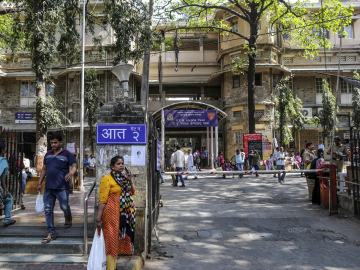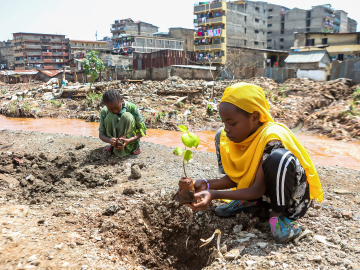The 2023 World Health Assembly: A New Financial Lifeline for WHO?
GENEVA – From responding to health emergencies and developing standards for genomic surveillance, to regulating trans-fats and monitoring the use of e-cigarettes, WHO has a broad mandate and myriad tasks to fulfill.
Yet for all its vast responsibilities, WHO is cash-poor. Its core budget for 2022 and 2023 was around US$4.4 billion (which doesn’t include special programs, emergencies, and polio eradication). That’s smaller than many big hospitals’ budgets. (New York Presbyterian hospital, for example, has an annual expenses of nearly US$10 billion.)
Financing the WHO will be a key agenda item at next week’s World Health Assembly. Here’s why it’s such an important issue.
The challenge for WHO is that only 14% of its funding is fully flexible, according to a report filed for this year’s WHA. These funds largely come from membership fees paid by countries known as assessed contributions, which are flexible in nature and are used to cover the organization’s core budget. The rest of WHO’s funds are mostly “voluntary” support from countries and donors that are earmarked for specific programs. (Some parts of the core voluntary contributions are also flexible to an extent.)
WHO faces another budget hurdle: While it runs on a 2-year budget cycle, some funding is for periods shorter than 2 years. This introduces lots of unpredictability in its operations—even in critical areas such as health emergencies, noncommunicable diseases, mental health, and nutrition to name just a few areas. These chronically underfunded areas are known in WHO parlance as “persisting pockets of poverty.”
“WHO needs increased, sustainable, and—very importantly—predictable funding to fulfil its multiple central roles in global health,” says Christoph Benn, director for Global Health Diplomacy at the Joep Lange Institute in Geneva. “The current funding is completely insufficient and is covering only a small part of the core budget, making it very difficult for the organization to plan its activities and attract the professional staff they need.”
Over the last 2 years, countries have discussed more sustainable financing. At last year’s WHA, they agreed in principle to increasing assessed contributions so they would cover 50% of the core budget by 2030–2031 at the latest. This has shifted budget planning. The proposed program budget 2024–2025, for example, assumes a 20% increase in assessed contributions, per a recent WHO financing report.)
A New Approach
In addition, the WHA will consider a new way for the organization to raise money for its myriad activities. Some argue the new approach could be a game-changer that will give WHO greater spending latitude on its own priorities. Others worry it will impinge on countries’ ability to set the agenda, opening the door for greater say from private actors.
Next week, the WHA will consider the new fundraising strategy, a replenishment mechanism similar to those of The Global Fund and Gavi – The Vaccine Alliance, while taking into account WHO’s unique role in global health as a member-state driven organization. This approach would involve a multiyear commitment from new donors (which may include foundations and philanthropists as well as wealthy countries) to finance the WHO’s core program budget. The proposal calls for a pledging event next year for the 2024-2028 WHO budget.
It’s understood that the replenishment funds would raise voluntary contributions for parts of the WHO’s budget not covered by assessed contributions. Sources told us that funds from replenishment would cover work by country offices, regional offices, and headquarters across all strategic priorities.
Typically, the core WHO budget supports the General Programme of Work and its “Triple Billion” targets: 1 billion more people benefitting from universal health coverage; 1 billion more people better protected from health emergencies; and 1 billion more people enjoying better health and well-being, according to a WHO source. “In addition, it supports making WHO more effective and efficient so it can provide better support to countries,” the source noted. Costs associated with the current General Programme of Work supported by the core WHO budget were pegged at US$12–14 billion over 4 to 6 years, health financing experts in Geneva say.
The benefits of the replenishment mechanism include much-needed resources for WHO, but the downsides are that it would come from a select group of donors. Critics fear this could mean that non-state donors could eventually secure a spot in the formal governance processes of WHO, which has been the exclusive domain of member states.
When the proposal for a replenishment mechanism was first pitched at the WHO’s Executive Board meeting earlier this year, countries didn’t register any serious objections. Many are loathe to pay more to WHO.
Priti Patnaik is the founding editor of Geneva Health Files, a weekly investigative newsletter that tracks power and politics in global health. She is based in Geneva.
Ed. Note: This article is part of Global Health NOW’s Local Reporting Initiative, made possible through the generous support of loyal GHN readers.
Join the 50,000+ subscribers in over 170 countries who rely on Global Health NOW summaries and exclusive articles for the latest public health news. Sign up for our free weekday newsletter, and please share the link with friends and colleagues.
WHO headquarters, May 2019. Brian W. Simpson




